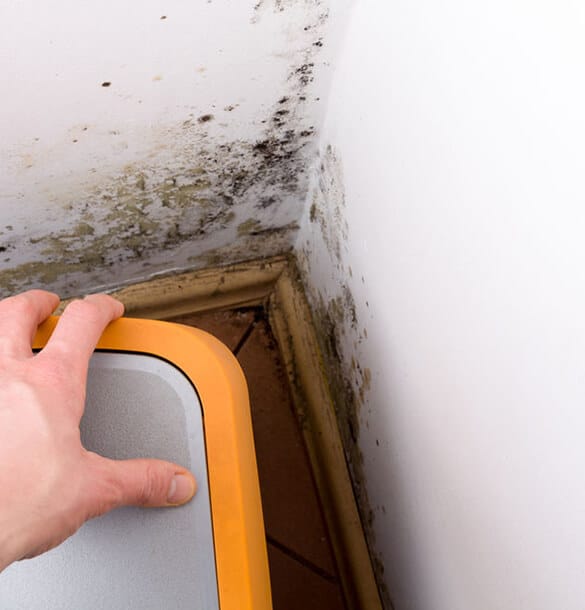Reliable Post Mold Remediation Cleaning Protocols
Wiki Article
Effective Post Mold Removal Solutions for Your Home
Mold and mildew development in homes can be a relentless concern, often requiring a methodical technique for reliable post-remediation remedies. From recognizing the variables that add to mold development to implementing proper cleaning techniques and moisture control steps, the procedure can be elaborate yet important for preserving a healthy living environment. Furthermore, checking out natural removal remedies and developing a routine for continuous maintenance are vital elements of a detailed mold removal technique. As property owners strive to resolve mold concerns, finding the most effective remedies ends up being paramount for the health of their families.Understanding Mold And Mildew Development Factors
The primary element contributing to mold development is wetness. Mold and mildew spores need wetness to germinate and flourish, making damp or damp environments highly prone to mold and mildew invasions.
In addition, airflow and light exposure can impact mold growth. Locations that do not have proper air flow and natural light are extra susceptible to mold and mildew development. By resolving these elements adequately, individuals can successfully mitigate mold growth and guard their living settings.
Proper Mold Cleansing Strategies
Utilizing efficient cleansing methods is necessary in avoiding the reappearance and addressing of mold contamination in interior settings. When managing mold, it is vital to focus on safety by wearing protective gear such as masks, handwear covers, and goggles. The primary step in appropriate mold and mildew cleaning is to contain the affected area to avoid the spread of spores to unpolluted locations. This can be achieved by securing off the space and using air scrubbers or adverse air equipments to keep air quality.
Applying Wetness Control Actions
To effectively avoid mold and mildew development and contamination in interior settings, executing dampness control actions is paramount. Moisture is the primary element that fuels mold and mildew special info advancement, making it important to handle humidity degrees within the home. One reliable measure is to make use of dehumidifiers to maintain indoor moisture levels below 60%. In addition, guaranteeing appropriate air flow in locations vulnerable to moisture build-up, such as bathrooms and kitchens, can help in reducing the danger of mold and mildew growth. On a regular basis evaluating a knockout post and fixing any type of leakages in pipes, roofings, or windows is also essential in preventing excess dampness build-up. Making use of exhaust fans while food preparation or bathing, and enabling air circulation by maintaining furniture a little far from walls can aid in dampness control. In addition, using moisture-resistant products in high-humidity locations, such as mold-resistant drywall and paints, can be valuable. By vigilantly implementing these wetness control measures, home owners can effectively decrease the likelihood of mold and mildew recontamination and keep a healthy interior atmosphere.Utilizing All-natural Removal Solutions
After successfully applying moisture control steps to avoid mold and mildew growth in indoor atmospheres, house owners can currently explore the effectiveness of natural remediation options in preserving a healthy and balanced space. Natural removal remedies make use of environmentally pleasant methods to fight mold and mildew, making them a prominent selection for those looking for safe alternatives. One such service is utilizing vinegar, a natural antimicrobial agent, to disinfect and clean surfaces contaminated by mold. Just weaken vinegar with water and spray it onto the influenced locations, permitting it to rest for a couple of hours prior to wiping tidy. Furthermore, tea tree oil, understood for its antifungal residential or commercial properties, can be mixed with water and sprayed onto mold-infested surfaces to inhibit further growth. An additional all-natural choice is hydrogen peroxide, which can successfully kill mold on numerous surfaces without leaving harmful residues behind. By incorporating these all-natural removal solutions into their cleansing regimens, home owners can properly deal with mold and mildew development while advertising a healthier indoor setting for themselves and their families.blog

Maintaining a Mold-Free Atmosphere
On a regular basis checking areas prone to mold and mildew growth, such as restrooms, attics, kitchens, and cellars, is vital. Correct air flow in areas with high moisture levels is also crucial to preventing mold and mildew development.Additionally, maintaining cleanliness in the home is crucial for mold prevention. Keeping indoor plants in check and guaranteeing appropriate water drainage in exterior landscape design can decrease wetness accumulation, decreasing the probability of mold and mildew problems.
Conclusion
Finally, it is vital to attend to mold development variables, utilize appropriate cleaning strategies, apply wetness control measures, use natural remediation solutions, and preserve a mold-free setting in order to effectively manage message mold and mildew remediation in your house - Post Mold remediation cleaning. By adhering to these techniques, you can protect against mold and mildew from recurring and make sure a healthy and balanced living environment for you and your household
The main variable contributing to mold growth is moisture. Mold spores call for dampness to prosper and sprout, making moist or damp atmospheres extremely at risk to mold and mildew infestations.To efficiently stop mold and mildew development and contamination in interior settings, implementing moisture control steps is vital. Furthermore, making certain correct air flow in locations vulnerable to moisture build-up, such as kitchens and restrooms, can aid minimize the danger of mold and mildew growth.After effectively carrying out wetness control steps to stop mold growth in indoor environments, property owners can now explore the effectiveness of natural remediation services in preserving a healthy and balanced living room.
Report this wiki page